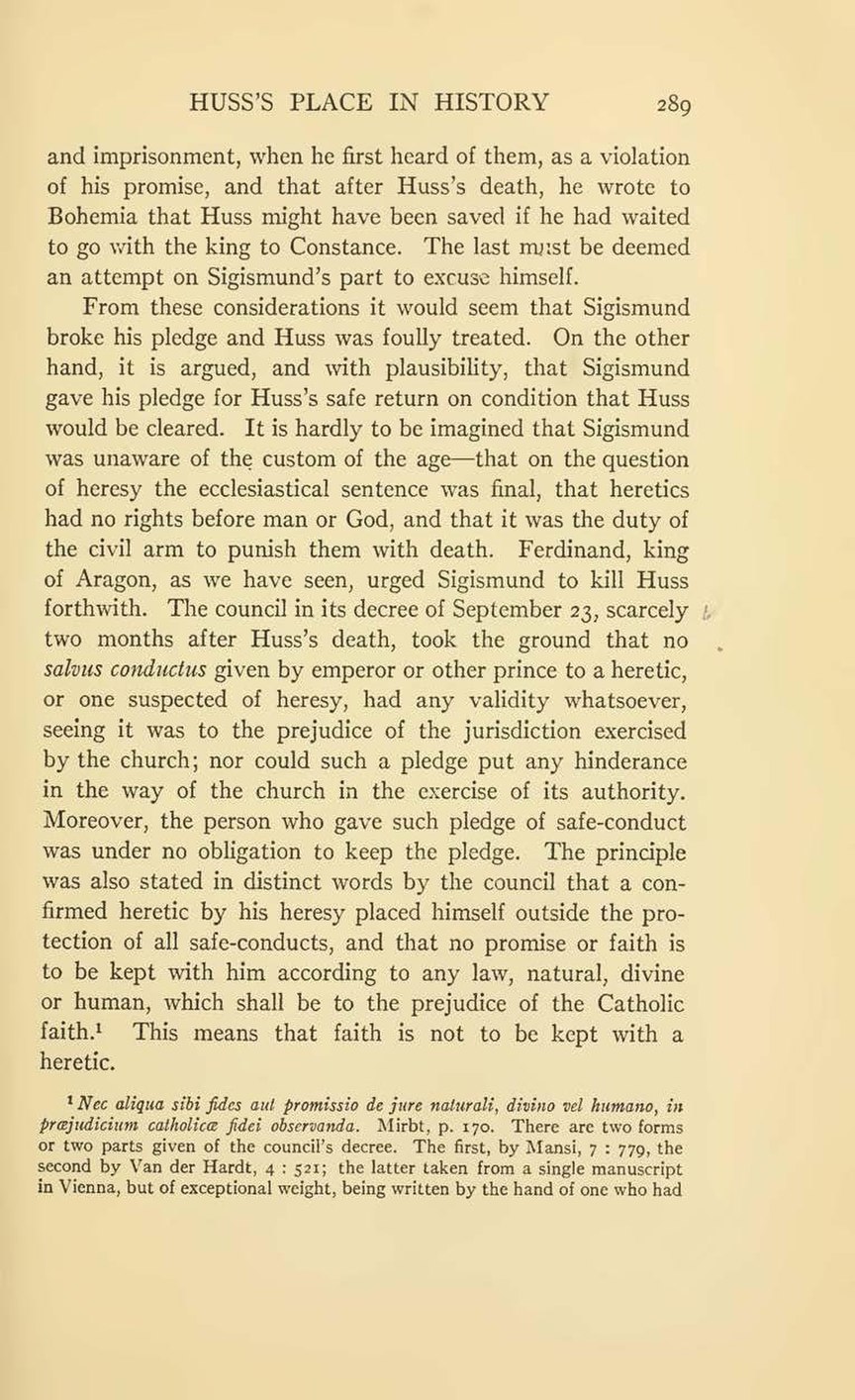and imprisonment, when he first heard of them, as a violation of his promise, and that after Huss’s death, he wrote to Bohemia that Huss might have been saved if he had waited to go with the king to Constance. The last must be deemed an attempt on Sigismund’s part to excuse himself.
From these considerations it would seem that Sigismund broke his pledge and Huss was foully treated. On the other hand, it is argued, and with plausibility, that Sigismund gave his pledge for Huss’s safe return on condition that Huss would be cleared. It is hardly to be imagined that Sigismund was unaware of the custom of the age that on the question of heresy the ecclesiastical sentence was final, that heretics had no rights before man or God, and that it was the duty of the civil arm to punish them with death. Ferdinand, king of Aragon, as we have seen, urged Sigismund to kill Huss forthwith. The council in its decree of September 23, scarcely two months after Huss’s death, took the ground that no salvus conductus given by emperor or other prince to a heretic, or one suspected of heresy, had any validity whatsoever, seeing it was to the prejudice of the jurisdiction exercised by the church; nor could such a pledge put any hinderance in the way of the church in the exercise of its authority. Moreover, the person who gave such pledge of safe-conduct was under no obligation to keep the pledge. The principle was also stated in distinct words by the council that a confirmed heretic by his heresy placed himself outside the protection of all safe-conducts, and that no promise or faith is to be kept with him according to any law, natural, divine or human, which shall be to the prejudice of the Catholic faith.[1] This means that faith is not to be kept with a heretic.
- ↑ Nec aliqua sibi fides aut promissio de jure naturali, divino vel humano, in præjudicium catholicæ fidei observanda. Mirbt, p. 170. There are two forms or two parts given of the council’s decree. The first, by Mansi, 7: 779, the second by Van der Hardt, 4: 521; the latter taken from a single manuscript in Vienna, but of exceptional weight, being written by the hand of one who had
